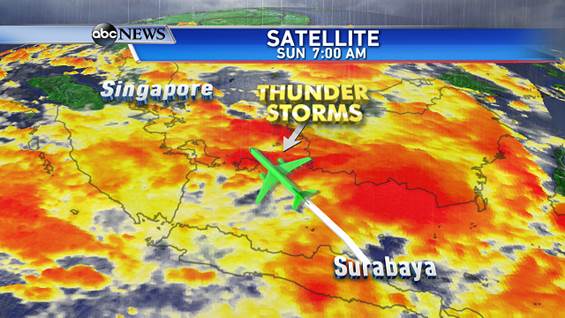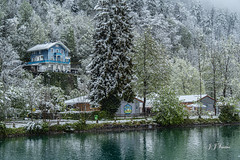AT the end of the day, the alliance between Malaysia Airlines (MAS) and AirAsia achieved via share swaps between their major shareholders does nothing by itself to improve MAS’ operations (see our cover story this issue for full details).
In fact a misguided overemphasis on MAS focusing on being a premium full service carrier (FSC) can have dire consequences on its revenue and viability as we shall explain.
What is clear from the figures in the chart is that the national airline has a severe revenue management crisis, which it must solve or perish. The yields broadly track the airline’s operational profits.
The problem with the yield and hence revenue is not the product, for MAS is rated consistently among the top airlines in the world for service.
The problem is not capacity utilisation because seats are on average filled three quarters, despite increases in capacity.
The problem is pricing. Despite a good, and even excellent, product it is not able to price it properly and this is reflected in its yield, which is the revenue per revenue passenger km flown (sen per RPK – the average amount an airline gets for flying a paying or revenue passenger one km.). Hence there are no profits but losses now.
If we look at the RPK in the chart for the first quarter of this year, it is back to what it was in the first quarter of 2006 after Datuk Seri Idris Jala joined MAS in December 2005. Idris’ quote above in February 2006 shortly after he took over is exactly applicable to MAS today, over five years later!
An examination of the chart shows that since Idris came in to MAS in December 2005, MAS had experienced a relentless increase in both RPK as well as revenue per available seat km or RASK (available seat km is a measure of capacity obtained by multiplying seats available by the kms flown and totalling them) up to end-2008.
The increase in RASK at the same time indicates that the seat factor (how much seats are filled, obtained by dividing the RPK by the ASK) or capacity utilisation was maintained at healthy levels.
Maximising revenue is a function of trying to control three key variables – capacity, capacity utilisation and fares. When any one of these increases, revenue increases if the other two at least stay where they are. The ideal is when all three increase simultaneously.
The issue is complex to say the least and is at the heart of the profitability of any airline. Costs, in contrast, are much easier to control and quantify. But in revenue management you need to have a good feel for what price you can charge without affecting capacity utilisation.
For this you need very good people who can feed the right information to some of the most complicated and complex modelling systems in airline operations. And you need to be constantly refining this because the situation changes all the time and from day to day.
Most FSCs like MAS have a basic fare to fill most of their seats. But with an average seat factor of say 75%, one quarter of the seats are empty and wasted if they are not utilised. They target these seats to be sold too, often at lower prices, because they bring in revenue at the margin almost all of which goes straight to profit because it is incremental.
Now here’s the paradox: MAS, like any other FSC, must in areas where the load factor or capacity utilisation is low compete on the back-end or economy class with the low cost carriers (LCCs). Not to do so would make it severely uncompetitive as an airline.
If the flights are likely to be full, MAS should move to higher prices and if they are not, than the airline has to offer discounts – sometimes considerable discounts – to fill up the seats and improve capacity utilisation. The conditions for these seats are like for LCCs – inflexible schedules and early bookings but low price.
The trick is to do this without actually cannibalising your current base customers who are willing to pay a premium for flexibility and full service and to charge a rate the market can bear for the front end – business and first class where demand is not that price sensitive.
Now, lets look at the chart again. MAS’ yields increased steadily and peaked in the fourth quarter of 2008 for a gain of 60% in just three years and exceeding even that of Singapore Airlines, indicating excellent revenue management.
It took a massive dip in 2009 along with other airlines in the aftermath of the global financial crisis which started in the last quarter of 2008. Most airlines recovered after that but MAS did not. Idris left in the third quarter of 2009 to head the Performance Management and Delivery Unit and become a Cabinet minister.
Singapore Airline’s yield in 2009 fell to 25.7 sen per RPK from 31.3 sen per RPK (at current exchange rates), down 18% and MAS’ fell from 32.9 sen per RPK to 23.4 sen by the fourth quarter of 2009, down a massive 29%. But in the first quarter of this year, SIA’s was back up to 29.9 sen per RPK but MAS’ continued to languish at 22.7 sen, even lower than that at the height of the crisis!
The difference between SIA’s and MAS’ yield now is a massive 7.2 sen. MAS has estimated in the past that one sen in yield translates to about RM500mil in revenue a year. That means that if MAS can increase its yield to that of SIA’s – not impossible, it has done it before – that’s an extra RM3.6bil in revenue.
Since this is incremental, it means an operating profit of over RM3bil assuming MAS’ operating profit this year is likely to be less than RM600mil!
That is basically the problem at MAS – its yields have not recovered post the world financial crisis which affected airlines very badly in 2009. If MAS focuses on getting its yield back while keeping costs down, it’s back in business and in a great big way too.
MAS is an airline. The argument that ancillary services will make most of its money is false, although that income is useful. It can and must make money from the airline operations, although there will be cyclical downturns.
The guy (or gal) who will turn MAS around has to understand airline fundamentals and if he has no experience in how pricing affects revenue in the airline world, he must learn pretty fast. And he has to be pretty fixated on costs and have a good eye for market opportunities. Someone like Idris.
Back to the deal. It is good for AirAsia, some of it for good reasons and some for bad reasons. It is good because AirAsia can get routes and compete with MAS on the long, medium and short haul. But bad if the intention is to cut competition through uneconomic means.
MAS should be able and allowed to compete on economic terms with AirAsia in the same way that AirAsia can – the competition must cut both ways. That is the key to a more vibrant airline sector. If MAS can increase its revenue overall and make money by offering cheaper fares on some routes, they must be permitted – and indeed encouraged – to so.
By all means collaborate via common procurement, maintenance, training and the like to bring costs down but allow full economic competition on pricing. Don’t carve the market out rigidly but let the markets overlap on the fringes as they do in reality.
Let MAS be a full service carrier on all sectors but with the liberty to compete on pricing when the economics dictate it. Let AirAsia do its low-cost thing – which it has done so well and with so much benefit for travellers – wherever it wants to and give it access to any route it wants.
And let Firefly do what it will from Subang with no restriction, meaning it does not have to be an FSC.
Then we have the best of both worlds – the most collaboration to bring down costs with the most competition to keep efficiency up, deliver excellent service and low fares. Then we will truly recognise the three elements in this equation – the two airline groups and the customers without whom the first two don’t exist.
Managing editor P Gunasegaram would like to quote another turnaround man Lee Iacocca, the one who took Chrysler back to profits against all odds sometime back: “In the end, all business operations can be reduced to three words: people, product, and profits.”
























